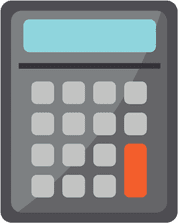As you consider an investment in apartment buildings, you have a lot to consider. When you examine a property, you’ll look at factors like neighborhood, school district, and rental vacancies. As part of your process for analyzing deals, you’ll also compare investment properties. This is where formulas like the gross rent multiplier are useful.
Make sure you download ALL my resources for FREE at this link: https://themichaelblank.com/vault
What Is Gross Rent Multiplier?
The GRM is a screening metric used by investors to compare available rental property options in a particular market. This number functions as the ratio of the property’s market value over its annual gross rental income.
For instance, one rental property might receive $2,000 in rent while another receives $1,200. The amount of rent you will receive in relation to the cost of the property is an important calculation, because the property that rents for $2,000, if both properties cost $200,000, will provide you with the highest rate of return on your investment. But if the cost of the property changes, this rate of return also changes.
You can use GRM to make a determination.
GRM does not include the entire net operating income, so it is not a good measure of how long an investment will take to pay off, and it is not the only calculation you should make use of to determine whether an investment is profitable.
A Simple Formula For Calculating GRM
The formula for the gross rent multiplier is simple:
Gross Rent Multiplier = Fair Market Value ∕ Gross Rental Income
Here’s an example: $200,000 Fair Market Value ∕ $24,000 Gross Rental Income = 8.3 GRM. This calculation shows that the payoff period lasts just over 8 years. It's important to note that this excludes other costs like maintenance on the unit, the vacancy rate, property taxes, and insurance. So, GRM is just one metric that enables you to compare comparable properties accurately without taking these additional costs into account.
What Makes a Strong GRM?
So what sort of GRM are you looking for?
The kind of rental market your property is in has a significant impact on what constitutes a “good” GRM. However, you should aim for a GRM of 4 to 7. You'll pay off your rental property faster if your GRM is lower. But again, it all depends on the specific real estate market in which you're making your purchase. A GRM of 7.5 for a particular investment property might not seem “too high” depending on the market.
GRM vs. Capitalization Rates
GRM is frequently compared with capitalization rate and net operating income.
By dividing the property's net operating income (NOI) by its property asset value, a capitalization rate (also known as a real estate cap rate) compares the return on commercial real estate properties. After deducting necessary operating expenses, NOI calculates revenue and profitability.
All of these metrics should be taken into account when making your decision, but GRM provides a faster way to assess investment properties than cap rate or NOI.
Using GRM In Real Estate Investments
After using the formula provided to calculate your GRM, you can contrast GRMs with similar characteristics. Consider one potential real estate investment, which has a GRM of 6, as an example. Other nearby properties may have a GRM of 8 or 10. In this situation, the property with a GRM of 6 might be the best option because it might present a lucrative investment opportunity.
The value of real estate in a particular market can also be forecast using GRM. If you are familiar with the known GRMs of nearby properties, you can use them to estimate the fair market value of that particular property.
You can use this formula to develop your own grading system for assessing investment properties in a specific market and become more knowledgeable about the metrics you should consider before making a purchase by manipulating these kinds of formulas.
And that’s why we share these terms with you. The more tools you have in your investor’s toolbox, the better equipped you will be to examine potential investments and make sound decisions.
Be sure to check out these related articles:
The Difference Between FHA and Conventional Financing

